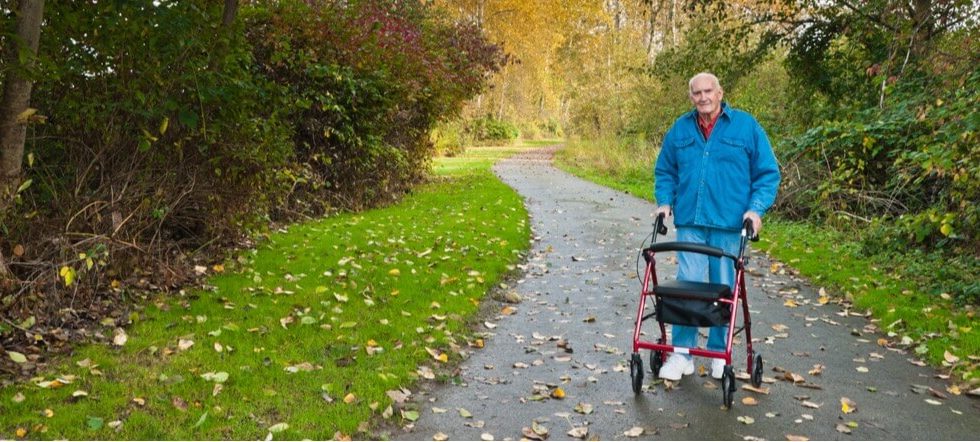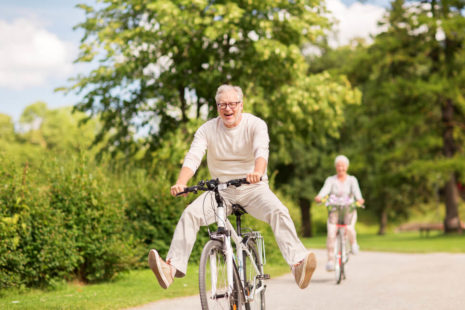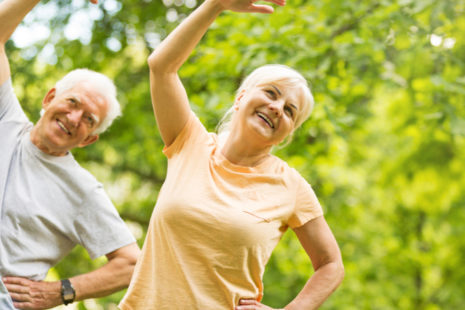As people age, their mobility becomes more limited due to illnesses or/and injuries. Conditions like severe arthritis, stroke, or injuries from falls are the most common factors that contribute to limited mobility in aging adults.
This makes the usual activities and hobbies difficult or impossible for an aging person. However, limited mobility still doesn’t mean that a person needs to withdraw from activities and the world around them.
Here are 10 good activities for elderly people with limited mobility to help find things that suit your senior’s needs and interests.
1. Music
Research shows that music has the power to reduce stress, lessen pain, boost relaxation, increase productivity, and lift energy. Find a radio station with music a senior finds pleasurable or provide them with CDs, or an iPod with a playlist of music they enjoy.
Music evokes fond memories and pleasant emotions and stimulates feelings of wellbeing. Also, seniors with dementia who have difficulties remembering recent events may enjoy music that brings back older memories.
2. The Outdoors
Connecting with nature and spending time outdoors has many benefits. Spending time in nature helps seniors feel more energized, recover from injuries faster, and alleviates the symptoms of stress, anxiety, and depression.
Organize a trip to a nearby park, beach, or garden. It is important that the elderly spend time outside each day (not in the sun) as daylight helps absorb vitamin D and maintain the circadian clock.
3. Brain Games
Cognitive training may involve a quiz, sudoku, books of riddles, memory games and many more. These brain games can provide endless hours of fun and entertainment. But not only that, research shows that brain games can prevent cognitive impairment typical for dementia or slow down the progression of the symptoms in people who already have Alzheimer’s or another type of dementia.
4. Movies
Offer DVDs of a senior’s choice and or let them select movies they would like to watch. If possible, join the senior and watch movies together. Watching movies can provide a mental ‘time out’ and reduce loneliness and isolation. Movies can also help evoke memories and feelings of nostalgia. Nostalgia stimulates the mind and can be an effective part of treatment for memory loss in people with dementia.
5. Exercise
Exercise has the power to improve mood, increase relaxation, lessen stress, anxiety, and depression, and much more. Even if the older adult is challenged by limited mobility, there may still be exercise they can engage in. Different upper-body exercises such as seated exercises or chair yoga can be especially beneficial for people with limited mobility.
There are also exercises that seniors can perform using a walker for stability or exercises focused on ankles and feet to reduce swelling.
6. Reading
Reading is a great activity for seniors and a good way to spend time and keep the brain active and engaged. Reading can also reduce stress, delay cognitive decline, and improve memory.
Provide books, e-books, and magazines to your older adult. Also, they can use audiobooks or look at photographs.
Organizing a book club among seniors is a great way to engage them in activities and keep them socially active.
7. A New Language
It is never late to learn a few words of a new language. Learning a new language can be fun but also a useful activity for older adults, as it helps prevent cognitive decline and keeps the brain active.
8. Poetry or Journaling
Poetry and language can have a positive effect on the brain. Writing poetry and journaling will allow seniors to express their deepest thoughts and feelings and help evoke memories.
9. Mindfulness meditation
Mindfulness exercise has proven to boost resilience and reduce the levels of stress. Also, practicing mindfulness can help the person recognize stress-related somatic symptoms such as aches and pains, as well as negative thoughts that trigger anxiety and depression.
Studies also show that mindfulness can increase optimism, boost self-esteem, and help the person acknowledge their emotions instead of trying to avoid them. Also, focusing on breathing and calming the mind and body can help the person feel more relaxed.
10. Hobbies
Hobbies such as knitting, gardening, crochet, painting, or coloring are some examples of great activities for older adults with limited mobility.
These activities provide fun and entertainment, at the same time allowing the seniors to get in touch with their creative side.
Research shows that creative activities have many health benefits. Arts and crafts can help people with chronic illnesses to alleviate negative emotions and reduce stress and anxiety. A lot of people find coloring activity relaxing and soothing.
For example, coloring therapy for adults is a great tool to relieve stress and tension and help express emotions.
Colors are often used to communicate feelings. For example, green symbolizes nature and calmness and it is used as a part of many different relaxation methods. Similarly, blue generally symbolizes calmness, while yellow represents life energy and optimism. Red creates a sense of action and urgency while orange symbolizes confidence, physical strength, and resilience. Black speaks of luxury and sophistication and purple symbolizes wisdom and elegance.
Therapeutic knitting is another activity that has many benefits for aging adults. Knitting is a fun and creative activity. However, research also shows that therapeutic knitting is a helpful way to help cancer patients cope with illness by easing the symptoms of stress, anxiety, and depression.
Also, many people with chronic illnesses report that knitting and other hobbies help them quiet the mind, focus, and relax. Moreover, producing something tangible gives the person a sense of accomplishment, satisfaction, and pride.
Keeping seniors with limited mobility active has positive effects on both body and mind. Engaging in activities alleviates stress, anxiety and depression, loneliness, low self-esteem, and social isolation. It can help boost confidence and the person’s motivation. Also, being active helps older adults change negative thoughts and attitudes into positive ones and boosts a person’s overall well-being.
You can also read about how to motivate seniors to exercise.







